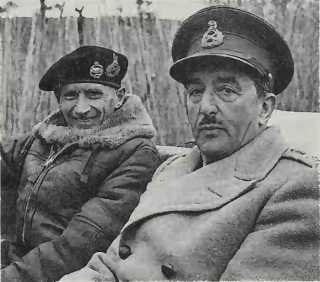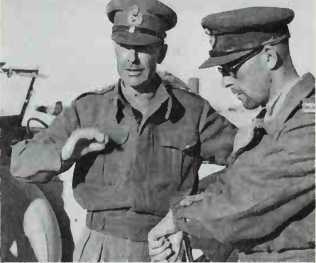Aksai Chin (India-China War, 1959, 1962). The furthermost part of Ladakh on the Tibetan side of the Karakorum mountains. Acquired by India (1947) as part of Kashmir. British political officers had claimed that Aksai Chin was under British suzerainty despite Chinese claims that it was theirs; no agreed border was ever demarcated. After the communist government of China occupied Tibet, a highway was built directly through Aksai Chin linking Sink-iang with western Tibet. The Indian government did not discover the road until 1958. Thereafter, military outposts were set up in Ladakh, despite tenuous communications, either by road or air (because of the altitude). The two sides confronted each other in the Chip Chap valley. When hostilities broke out in October 1962, the Indians (mainly Gurkhas) were reinforced and no serious inroads were made. When China announced a cease-fire all along the front, both sides accepted an arrangement which left the highway in Chinese-occupied territory while Leh and southwest Ladakh remained in Indian hands. HT.
Akyab see burma campaign.
Alam Haifa, Battle of (August 30-September 7 1942). Rommel attacked the southern sector of the El Alamein Line with the Afrika Korps (Nehring) in his final attempt to break through to the Suez Canal. Montgomery, anticipating the German plan, strengthened the Alam Haifa ridge in the rear of his position, which Rommel would have to attack once he had broken through the British minefields, with 10th Armoured and 44th Divisions. Rommel did breach the minefields during the night of August 30-31, and, as expected, his panzer divisions swung north to clear Alam Haifa. They were met and decisively beaten by concealed anti-tank guns and tanks that had moved into “hull down” positions as soon as German intentions were clear. By evening Nehring had been wounded; von Bismarck, commanding 21st Panzer Division, had been killed; and von Vaerst of 15th Panzer Division, who had assumed command of the Afrika Korps, had withdrawn to reorganize.
Montgomery resisted the temptation to counterattack with his armour, a tactic which had proved so fatal in past desert battles. Instead, he pounded the Axis forces, stranded for lack of fuel in the low ground between Alam Haifa and the minefields, with intense air and artillery bombardments until Rommel managed to extricate them. At Alam Haifa, Montgomery achieved ascendancy not only over Rommel, but also amongst the officers and men of Eighth Army, who had suffered so many recent defeats. WGFJ.
Alamein see el alamein.
Alamogordo. At 0530 hours on July 16 1945, the first full-scale test of an implosion type atomic fission bomb took place at Alamogordo, New Mexico.

Alanbrooke {right) with Montgomery
Alanbrooke, Field Marshal Lord (Sir Alan Brooke) (1883-1963). Br. A former Commandant, School of Artillery, and Director of Military Training, Brooke was a Corps commander in France, 1939—40. Following extrication of the bef from Dunkirk, he became c-in-c Home Forces, awaiting the apparently imminent German invasion, and, late 1941, Chief of the Imperial General Staff, the professional head of the British army. He was thus Chruchill’s principal military adviser, 1942-45. In translating Churchill’s often fanciful strategic concepts into military action, he frequently had to run counter to his master’s expressed wishes, but performed his tasks with such diplomatic skill and consummate professionalism that he was denied the chance of further field command. His personal diaries, The Turn of the Tide and Triumph in the West (ed. Bryant), give a fascinating view of high wartime command. Mil.
Albania, Italian invasion of
(1939). By 1938, Italian economic and political control of Albania was almost total. Its ruler. King Zog, was kept in power largely by Italian subsidies and the Albanian army was mostly staffed by Italian officers. In the spring of 1938 Mussolini and Ciano resolved to annex Albania and tentative plans were laid for the operation to be carried out the following May. Gen Guzzo-ni, commanding the expeditionary force, was informed of the proposed invasion only a week before it was due to take place. In spite of lamentable planning, intelligence and communications, 22,000 troops made landings at four Albanian ports on April 7 1939. Brief and ineffective resistance was offered by Albanian forces at Durazzo but the major cause of delay in occupying the capital, Tirane, was Italian disorganization. King Zog fled to Greece and on April 16 King Victor Emmanuel accepted the crown of Albania. However, far from being an economic and political asset, Albania proved to be a financial millstone, and the invasion a diplomatic blunder. Britain and France offered guarantees to Romania and Greece in a clear signal that they wished to limit Italian territorial aspirations. MS.
Albatros C III (German, WWI). Two-seat general purpose. Prototype (150hp Benz) flew late 1915; used on Western Front 1916; most numerous of the Albatros two-seaters, served as bomber, reconnaissance and artillery-spotting aircraft; also used in Macedonia, Russia. 160hp Mercedes D III or 150hp Benz Bz III engine; max. speed 87.5mph (140kph); two
Albert I, King of the Belgians,
(1875-1934). Succeeding his autocratic uncle, Leopold II, in 1909, Albert initiated sensible democratic reforms. Although his attempts to modernize the Belgian army and redeploy it against a perceived German threat were hampered by hidebound generals, he refused the German demand for unopposed passage for their forces through Belgium on August 2 1914, and, becoming c-in-c on the commencement of hostilities, ordered the destruction of bridges and railway tunnels and opposed the advance of 34 German divisions with his small (7 divisions) army. Following the fall of Liege (August 16), he took personal command, making a fighting retreat to Antwerp. Belgium’s determined resistance further disrupted the Schlieffen plan, while the reprisals it provoked attracted worldwide sympathy for the Allied cause. Following Antwerp’s fall (October 9), Albert withdrew his army to northwest France. In September-November 1918, he commanded an Anglo-Belgian army group in a successful offensive along the Flanders coast. RO’N.
Alderson, Lt Gen Sir Edwin
(1859-1927). Br. In October 1914, Alderson, an officer with considerable mounted infantry experience, was given command of the 1st Canadian Division, which fought under him in the Second Battle of Ypres and at Festubert and Givenchy in 1915. Later that year, when the 2nd Canadian Division arrived in France, the Canadian Corps was formed, with Alderson at its head. However, he was removed from command in May 1916 following the loss of St Eloi craters near Ypres, and spent the rest of World War I as Inspector General of Canadian Forces in England. PJS.
Aleutian Islands campaign
(1942-43). Immediately before the Battle of Midway, Yamamoto deployed Northern Area Force (Vice Adm Hoshiro Hosogaya, with two light carriers, transports and escorts) in a diversionary attack on the Aleutian Islands chain, extending cl,100 miles (1,760km) southwest from Alaska across the North Pacific. Although forewarned by “Magic”, US North Pacific Force (Rear Adm Robert A “Fuzzy” Theobald; subsequently replaced by Kinkaid) bungled its interception. The US base at Dutch Harbour, Unalaska, eastern Aleutians, was damaged by Japanese carrier aircraft on June 3-4 1942, and on June 7 Japanese troops landed unopposed on the western Aleutian islands of Attu and Kiska.
Although the Japanese made no serious attempt to extend their conquest, air and naval clashes in the fog-shrouded and stormy Aleutians continued through the following year (see Komandorski islands). From May 11 1943, 12,000 US troops landed on Attu, securing it on June 2 after savage fighting (2,380 Japanese dead and 28 prisoners; 552 US dead and 1,140 wounded). Heavy naval and air bombardments - including the “Battle of the Pips”, July 27, when a US battleship task group wasted a prodigious amount of ammunition on radar “ghosts” - preceded an attack on Kiska, but when c34,000 US and Canadian troops landed on August 15 it was found that Japanese submarines and warships had evacuated the 5,000-strong garrison during the foggy nights of June-July. RO’N.
Alexander, of Tunis, Field Marshal Earl (1891-1969). Br. Came to Churchill’s notice when, as Commander 1st Division, he was rearguard commander at Dunkirk

Alexander at Eighth Army hq, 1942
In 1940. He was sent to save Burma from the Japanese in March 1942, but arrived too late to do more than withdraw the Burma Army back to India.
When Churchill visited Cairo in August 1942, he appointed Alexander to replace Auchinleck as c-in-c. Middle East, and gave him Montgomery as Commander
Eighth Army. They formed a well-balanced team, which won the battles of Alam Haifa and El Ala-mein, and drove Rommel out of Libya by the end of January 1943.
At the Casablanca Conference, Churchill and Roosevelt agreed that Alexander should become Eisenhower’s Deputy Land Force Commander. He commanded First and Eighth Armies (Anderson and Montgomery) from 18th Army Group HQ in the Tunisian campaign, forcing the surrender of all German forces in Africa on May 12 1943; then Seventh US and Eighth British Armies (Patton and Montgomery) from Fifteenth Army hq in the Sicilian campaign; and invaded Italy with Fifth US Army and Eighth British (Clark and Montgomery) in September 1943.
As Commander, Allied Armies in Italy, he defeated Kesselring in the final battles for Rome in May 1944, and in the battles of the Gothic Line in the autumn of that year. He was promoted Field Marshal with effect from June 4, the day Rome fell. As Supreme Allied Commander, Mediterranean, from December 1944, he crushed the communist rebellion in Greece, and ended the Italian campaign with the German surrender on May 2 1945. Minister of Defence in the last Churchill administration, 1952-54. WGFJ.
Alexeiev, Gen Mikhail (18571918). Russian. Appointed cos of the Russian South Western Army Group, August 1914, Alexeiev briefly commanded North Western Front, March-September 1915, relinquishing this independent command to become cos to Tsar Nicholas II when the Russian ruler assumed supreme command. In 1916, responding to Allied requests for a major offensive to relieve the Central Powers’ heightened pressure on the Western and Italian fronts, Alexeiev approved Brusilov’s offensive, but, in failing to give it sufficient support, contributed to its ultimate failure. Involved in the negotiations surrounding the Tsar’s abdication in March 1917, Alexeiev was briefly c-in-c under the Provisional Government, but disagreed with Kerensky and was replaced by Brusilov. At the time of his death he was helping to raise an antiBolshevik army. MS.




 World History
World History









